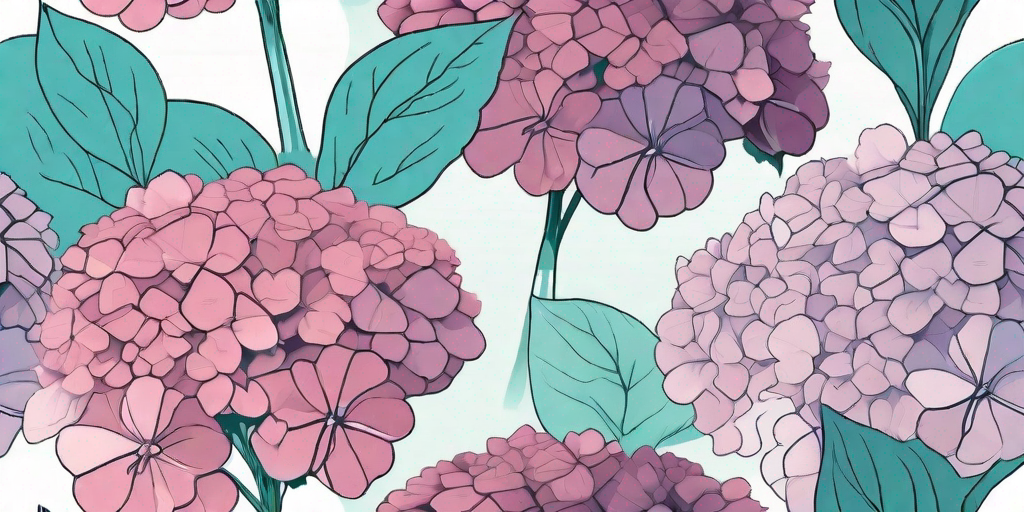
Ah, the hydrangea. A flower that can turn any backyard into a blooming paradise. But, how do you go from a packet of seeds to a garden full of these beautiful blooms? Well, my green-thumbed friend, you're about to find out.
Understanding the Hydrangea
Before we dive into the dirt, let's take a moment to appreciate the hydrangea. This plant is not just a pretty face. It's a hardy, versatile shrub that comes in a variety of shapes and sizes, from small bushes to large tree-like forms.
Hydrangeas are known for their large, round flower heads that come in a variety of colours, including blue, pink, white, and purple. The colour of the flowers can change depending on the pH level of the soil. Now, isn't that a fun party trick?
The Science Behind the Colour
So, how does the soil's pH level affect the colour of hydrangea flowers? It's all about the availability of aluminum ions. In acidic soils, these ions are more available, leading to blue flowers. In alkaline soils, the ions are less available, resulting in pink flowers.
But if you're not a fan of blue or pink, don't worry. White hydrangeas are not affected by soil pH. They're the rebels of the hydrangea world, doing their own thing regardless of the soil conditions.
Planting Hydrangea Seeds
Now that we've got the science out of the way, let's get down to business. Planting hydrangea seeds may seem daunting, but with a little patience and the right techniques, you'll have a garden full of blooms in no time.
First things first, you'll need to get your hands on some hydrangea seeds. These can be purchased from a nursery or online. Just make sure you're buying from a reputable source to ensure the quality of the seeds.
Step-by-Step Guide to Planting
- Prepare the soil: Hydrangeas prefer well-drained soil with plenty of organic matter. So, before you plant, make sure to enrich your soil with compost or well-rotted manure.
- Sow the seeds: Sprinkle the seeds on top of the soil and cover lightly with a thin layer of soil or compost.
- Water well: Hydrangeas love water, so make sure to keep the soil moist (but not waterlogged).
- Wait for germination: This can take anywhere from 14 to 28 days, so be patient.
- Transplant the seedlings: Once the seedlings have two sets of true leaves, they can be transplanted into individual pots or directly into the garden.
Caring for Your Hydrangeas
Once your hydrangeas are planted, they'll need a bit of TLC to thrive. This includes regular watering, proper pruning, and protection from pests and diseases.
But don't worry, hydrangeas are pretty low-maintenance plants. They're like the cats of the plant world – they like attention, but they're also quite happy to do their own thing.
Watering and Feeding
Hydrangeas love water, but they don't like to be waterlogged. So, make sure to water them regularly, but also ensure the soil is well-drained.
As for feeding, a slow-release fertilizer applied in the spring and again in the summer should do the trick. Just make sure not to overfeed, as this can lead to leafy growth at the expense of blooms.
Pruning and Protecting
Pruning hydrangeas can seem a bit confusing, as the timing depends on the type of hydrangea. But as a general rule, most hydrangeas are pruned in late winter or early spring.
As for protection, keep an eye out for common pests like aphids and scale insects. If you spot any, treat with a suitable insecticide.
FAQs
When is the best time to plant hydrangea seeds?
The best time to plant hydrangea seeds is in the spring, after the last frost. This gives the plants plenty of time to establish before the winter.
Can I grow hydrangeas in pots?
Absolutely! Hydrangeas can be grown in pots, just make sure the pot is large enough to accommodate the mature size of the plant.
Why are my hydrangea flowers not blooming?
There could be a few reasons for this. It could be due to overfeeding, lack of sunlight, or improper pruning.
Conclusion
So there you have it, the secret to successful hydrangea seed planting. With a bit of patience and care, you'll be well on your way to growing your own blooming paradise.
And remember, gardening is a journey, not a destination. So, take your time, enjoy the process, and don't be afraid to get a little dirt under your nails. Happy planting!















